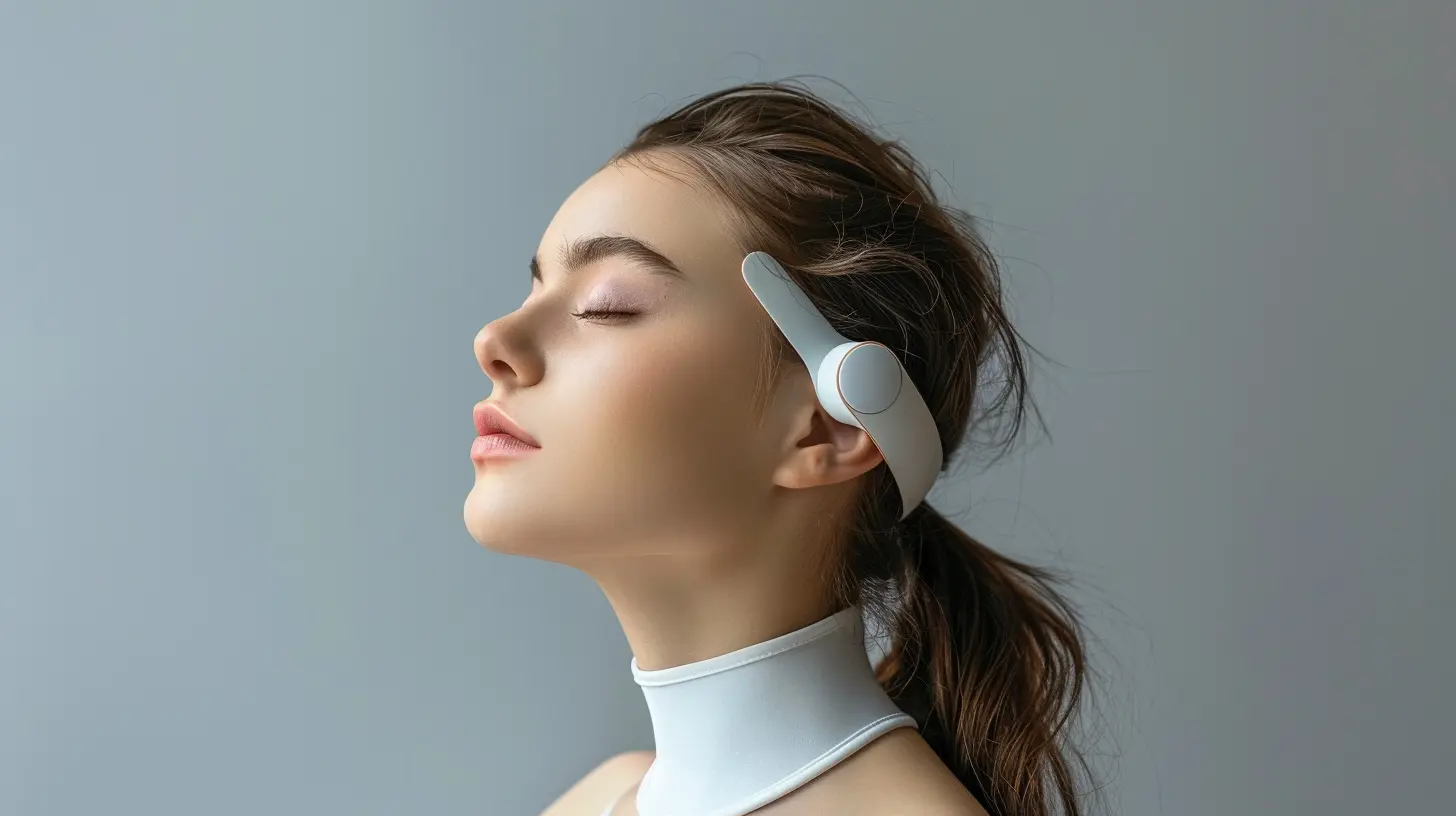Can Wearable Tech Help You Improve Your Posture?
5 November 2025
Let’s be honest for a second—how’s your posture right now? Are you sitting up straight, shoulders back, spine aligned? Or are you hunched over your phone or slouched in your chair like a question mark?
Don’t worry, you’re not alone. In today’s world, we’re spending more time glued to our screens than ever before. And let’s face it, posture is usually the last thing on our minds—until the neck pain kicks in or the lower back starts whining. Here's the good news: wearable tech might just be the game-changer we need.
But can these little gadgets really help fix years of bad habits? Can a small device remind you to straighten up when even your mom gave up trying? Let’s dive into how wearable tech is stepping up (literally and figuratively) to tackle poor posture.
Why Posture Is a Bigger Deal Than You Might Think
Before we get into the tech, let’s talk about why posture matters so much. Sure, standing tall looks confident—but it's way more than just appearances.Bad posture can:
- Lead to chronic back, neck, and shoulder pain
- Cause headaches and fatigue
- Mess with your digestion, breathing, and circulation
- Make you look and feel older
And yes, slouching all day might even impact your mood. Don’t believe it? Try sitting upright for a few minutes versus slouching—you’ll feel the energy shift.
In short? Posture isn’t just about looking good. It’s about feeling good and functioning well.
Enter Wearable Tech: The Digital Nudge You Didn’t Know You Needed
These days, there’s a wearable for almost everything—step tracking, heart rate monitoring, sleep tracking… you name it. But posture tracking? That’s a relatively new (and really cool) frontier.Wearable posture trainers are small devices, often worn on your back, shoulders, or even clipped to your clothes. Some models stick directly to your skin (don’t worry, they’re gentle), while others are built into smart shirts or bras.
What do they do? In simple terms: they monitor your posture in real-time and gently remind you—usually with a vibration—whenever you start to slouch. It’s like having a tiny, tech-savvy coach whispering, “Straighten up!” every time gravity starts to win.
How Do Posture Wearables Work?
Most posture wearables use accelerometers, gyroscopes, and motion sensors to detect your body’s alignment. Some even use AI algorithms to track patterns over time. Here’s a quick breakdown of how they work:1. Initial Calibration – When you first use the device, you sit or stand in your ideal posture. The wearable uses that as its baseline.
2. Real-Time Tracking – As you go about your day, the gadget monitors your posture.
3. Alerts & Reminders – If you start slouching or tilting, the wearable vibrates, nudging you to adjust.
4. Progress Reports – Many companion apps track your improvements, provide insights, and even offer posture exercises.
Pretty smart, right?
Popular Wearable Posture Devices Worth Checking Out
Curious what’s actually out there? Here are some popular posture wearables making waves:1. Upright Go
- A small, stick-on device worn on your upper back- Vibrates when you slouch
- Syncs via Bluetooth with a sleek mobile app
- Offers posture training programs
2. Lumo Lift (Note: Discontinued but still popular in some circles)
- Clipped to your shirt near the collarbone- Tracks posture and steps
- Lightweight and discreet
3. Posture Reminder Smart Braces
- Combines classic posture braces with built-in sensors- Offers vibration reminders when misalignment is detected
4. Smart Clothing (e.g., Nadi X, AlignMed)
- Integrated sensors in shirts, bras, or pants- Tracks posture and muscle activity
- Great for fitness enthusiasts or those with specific needs
These devices vary in features and price, but the core concept remains the same: awareness and gentle correction.
Is Wearable Tech a Magic Fix for Bad Posture?
Okay, here’s the truth bomb: no gadget in the world can fix your posture overnight. These devices aren’t silver bullets or magic wands. They’re tools.Think of them like training wheels for your spine. They help you build awareness and consistency—two things that are critical when changing any long-standing habit.
You can wear a posture tracker all day, but if you don’t respond to the feedback—by adjusting your habits, strengthening your core, or improving your workspace setup—it won’t take you far.
That said, wearable tech absolutely helps kickstart better behavior. It catches your slouches and reminds you to stay aligned—especially during those unthinking moments when you’re deep into emails or binge-watching yet another Netflix show.
The Science Behind It: Can These Gadgets Really Make a Difference?
Let’s get nerdy for a second. Studies around posture wearables are still emerging, but early research and anecdotal evidence are promising.Many users report:
- Reduced back and shoulder pain
- Increased awareness of posture throughout the day
- Improved confidence and body language
- Better focus and energy (because yeah, better breathing = better thinking)
One 2019 study published in the Journal of Bodywork & Movement Therapies suggested that wearable posture reminders can be helpful for behavior modification, especially when paired with exercise and ergonomic changes.
Translation? Gadgets work best when they’re part of a bigger game plan.
Pros and Cons: The Real Talk You Came For
If you’re wondering whether it’s worth dropping cash on another tech toy, here’s a quick breakdown.✅ Pros:
- Immediate feedback helps build new habits- Small, discreet, and easy to use
- Most come with helpful apps and insights
- Can reduce pain and boost awareness
❌ Cons:
- Requires consistent use (no ghosting your posture coach!)- Some people find vibrations annoying
- Stick-on models may lose adhesion over time
- Not a substitute for physical therapy or serious spinal issues
Bottom line? If you're looking for a gentle nudge and a tech-assisted way to stay mindful, posture wearables are worth considering.
Who Should Try Posture Wearables?
Honestly? Just about anyone who spends a lot of time sitting, working at a desk, driving, or using a computer or smartphone (aka, most of us).They’re especially useful for:
- Remote workers and students
- Office-based professionals
- Gamers and content creators
- People recovering from minor injuries
- Fitness buffs who want better form and alignment
Even if your posture isn’t terrible, using a posture wearable can help you refine it and prevent future issues.
How to Get the Most from Your Posture Wearable
If you decide to give one a shot, don’t just slap it on and hope for the best. Here’s how to really make it count:1. Use it regularly (but don’t overdo it) – Start with short sessions and increase over time.
2. Pair it with posture exercises – Strengthen your core, back, and shoulders.
3. Improve your environment – Adjust your chair, desk, monitor height, and lighting.
4. Take movement breaks – Don’t just sit straighter—stand up, move around, stretch.
5. Reflect on your habits – Use the app to track patterns and set goals.
Think of your wearable as a coach, not a crutch.
Final Thoughts: Should You Try One?
So, can wearable tech help you improve your posture?Yes—but only if you’re willing to put in a little effort. These gadgets won’t magically straighten your spine or undo years of slouching solo. But they will keep you mindful, accountable, and on track.
If you’re the kind of person who appreciates feedback, loves data, and wants to take control of your physical well-being in a modern (and kinda fun) way, a posture wearable might just be your new favorite companion.
At the very least, it’ll catch you before your next Zoom call slouch—or before your back starts screaming at the end of the day. And that, honestly, is worth a lot.
So go ahead—stand tall, tech up, and give your spine the support it deserves.
all images in this post were generated using AI tools
Category:
Wearable TechAuthor:

John Peterson

